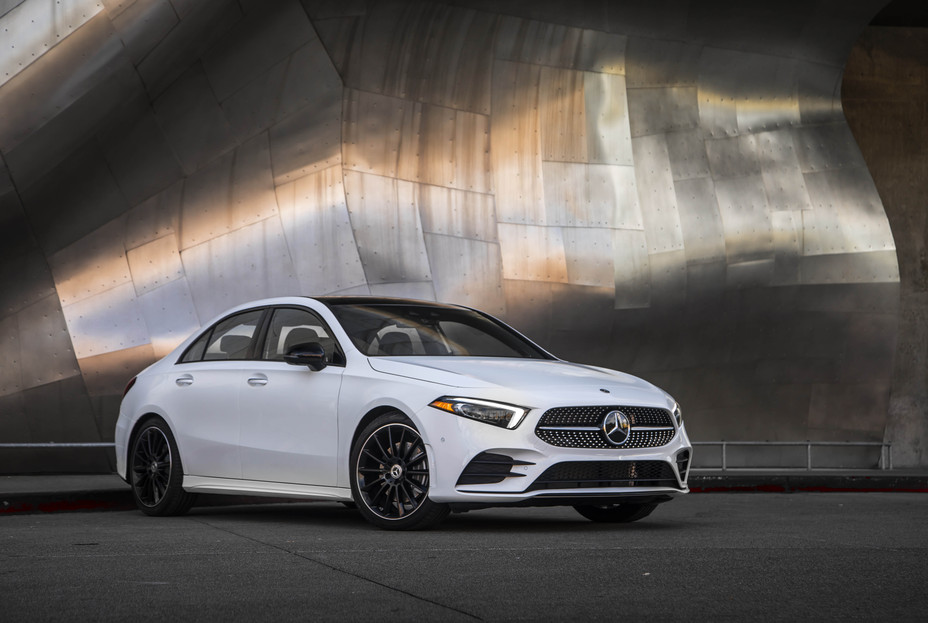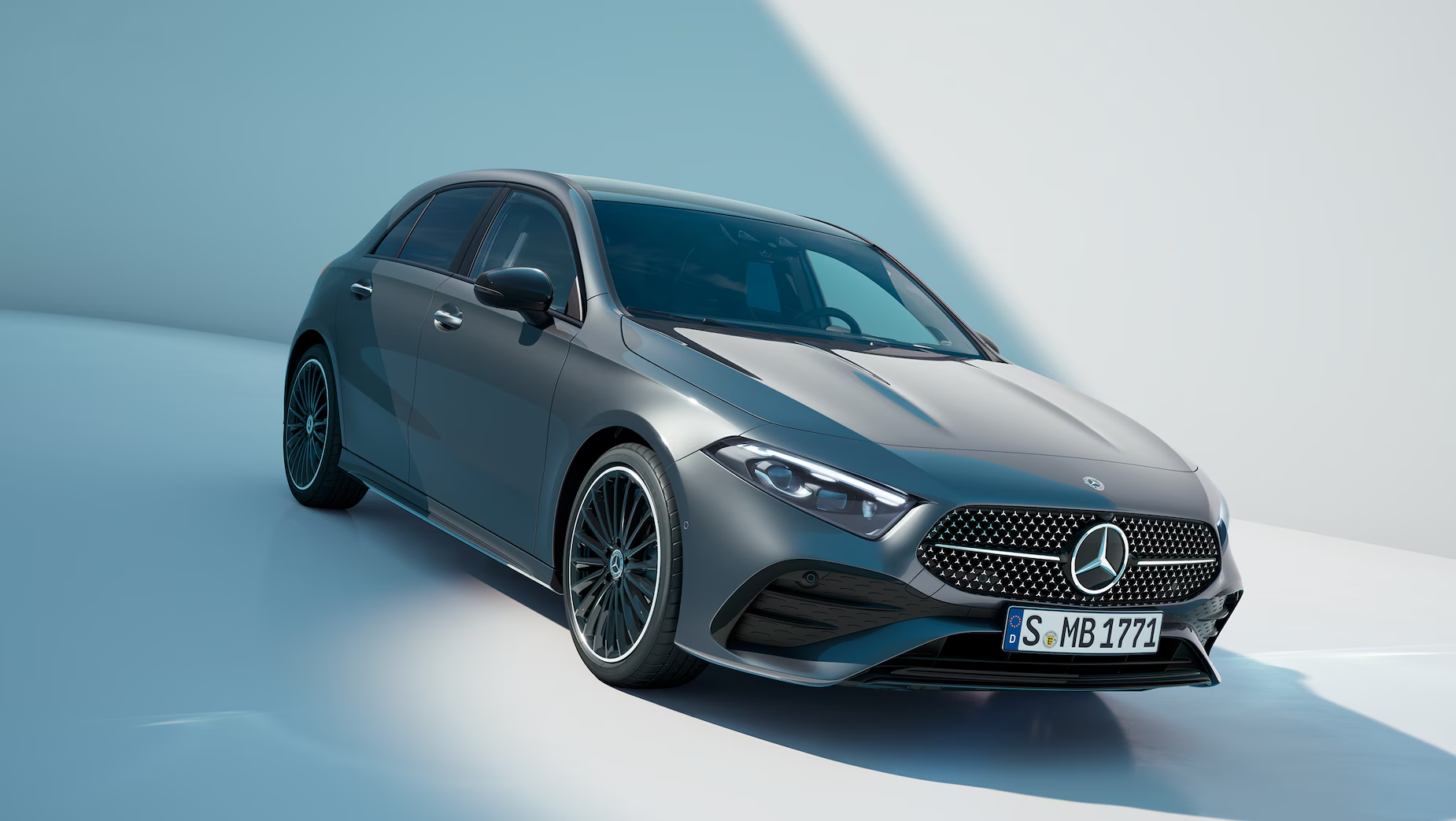The Mercedes-Benz brand is entering a bold new era — one that focuses on electrification, streamlined design, and the most advanced driving technologies ever built into luxury vehicles. But with that evolution comes change. As Mercedes-Benz prepares its 2026 model year lineup, several familiar nameplates are being phased out, marking the end of a chapter for some beloved models.
For loyal Mercedes-Benz owners and future buyers alike, understanding what’s leaving the lineup is just as important as knowing what’s new. Below, Kunes Auto Group breaks down the confirmed and expected discontinuations from the 2025 to 2026 model year, why they’re happening, and what it means for customers across the Midwest and beyond.
1. Saying Goodbye to the Mercedes-Benz A-Class
After years as the entry point into Mercedes-Benz luxury, the A-Class sedan is being discontinued for the 2026 model year. This marks the end of an era for one of the brand’s most accessible vehicles — a car that introduced countless drivers to the Mercedes experience.
A-Class Legacy
The A-Class launched as a compact luxury sedan that blended Mercedes craftsmanship with approachable pricing. It quickly became a favorite among younger professionals and first-time luxury buyers, thanks to its sharp styling, agile handling, and tech-packed cabin featuring MBUX voice command and digital display integration.
Why It’s Leaving
Mercedes-Benz is simplifying its global lineup, focusing on models with stronger long-term demand. Compact sedans like the A-Class are being overshadowed by small crossovers and SUVs, such as the GLA and GLB, which now occupy the same price range but offer more space and flexibility. By retiring the A-Class, Mercedes can focus resources on these high-demand models and upcoming electric variants.
What It Means for Shoppers
The 2025 A-Class will be the final model year available, making this the last chance for fans to buy new. If you’re considering a smaller luxury sedan, act quickly — limited remaining inventory means opportunities are fading fast.
At Kunes Auto Group, we expect interest in final-year A-Class models to rise as buyers look to capture one of the last examples of this well-loved entry luxury car.

2. The EQE Sedan and EQE SUV: Transitioning Beyond the First Wave of Mercedes EVs
Mercedes-Benz has been leading the charge into the electric future, but as technology advances, the company is moving away from its first-generation EV lineup. Two of the earliest electric models — the EQE Sedan and EQE SUV — will be discontinued after the 2025 model year.
A Bold Start for the EQ Family
Introduced as part of the “EQ” electric lineup, the EQE represented Mercedes’ mid-size luxury EV segment. The sedan competed with the likes of the Tesla Model S and Porsche Taycan, while the EQE SUV offered a practical, family-friendly alternative with premium features and electric performance.
Both vehicles showcased Mercedes’ commitment to electric luxury — quiet cabins, advanced driver assistance, and stunning design language that set the tone for the brand’s EV future.
Why the EQE Is Being Retired
Mercedes-Benz isn’t backing away from electric vehicles — it’s simply evolving beyond the early EQ architecture. The company is transitioning to new-generation EVs that will be built on advanced platforms, designed for longer range, faster charging (thanks to 800-volt systems), and more efficient production.
In other words, the EQE models are being retired to make way for next-generation electric Mercedes-Benz sedans and SUVs that will redefine what luxury electrification can be.
What It Means for Buyers
For those looking to enter the Mercedes-Benz electric world, the 2025 EQE Sedan and SUV represent the last opportunity to own one of the pioneering models that started it all. These vehicles are expected to hold special significance as the “first wave” of Mercedes EVs — making them an appealing choice for early adopters and collectors.
Kunes Auto Group recommends checking availability early. Inventory for the EQE lineup is expected to tighten through 2025 as production winds down.
3. GLC Coupe and GLE Coupe: Streamlining the SUV Lineup
In the SUV world, Mercedes-Benz is known for offering vehicles that balance capability and elegance — but that lineup is about to get a little leaner. Beginning in 2026, Mercedes-Benz will discontinue the Coupe-style versions of its two most popular SUVs: the GLC Coupe and GLE Coupe.
The Coupe-SUV Concept
The Coupe versions of these SUVs were designed for buyers who wanted sporty style and presence without sacrificing everyday practicality. Their sloping rooflines and aggressive stance made them stand out, blending SUV functionality with a sporty silhouette. Over the years, these models built a dedicated following among luxury SUV enthusiasts.
Why the Coupe Variants Are Leaving
Mercedes-Benz plans to simplify its SUV lineup to reduce overlap between models and emphasize electrified offerings. The GLC and GLE will continue into 2026 in their standard SUV forms — updated with new features and hybrid options — but the Coupe designs will end production after 2025.
What It Means for Customers
The departure of the Coupe SUVs creates a unique buying window for those who appreciate that sleek, performance-inspired design. The 2025 model year represents the final chance to purchase new GLC or GLE Coupes before they become part of Mercedes history.
Kunes Auto Group recommends customers who value sporty styling visit soon to explore current inventory, as demand for final-year Coupe models tends to spike once production ends.
What These Changes Mean for Mercedes-Benz Buyers
1. A Shift Toward the Future
These discontinuations reflect Mercedes-Benz’s larger vision: fewer overlaps, more efficiency, and a stronger push toward electric innovation. While some nameplates are ending, the lineup is becoming sharper, more focused, and better aligned with what modern luxury buyers want.
2. Increased Exclusivity
Discontinued models often gain unique value over time. Whether it’s the last A-Class or the final EQE, owning one of these final-year editions could offer long-term appeal for enthusiasts and collectors alike.
3. Ongoing Support from Mercedes-Benz
Even after a model retires, Mercedes-Benz continues to provide full support through service centers, warranty coverage, and certified parts. That means buyers can invest confidently in outgoing models knowing Kunes Auto Group will continue to deliver premium care for years to come.
4. Perfect Timing for Buyers
As 2025 models start to phase out, dealerships will begin offering special incentives on remaining inventory. For shoppers looking to secure a piece of Mercedes-Benz history — and a great deal — now is the perfect time to explore what’s available before the 2026 lineup arrives.
Why Mercedes-Benz Is Streamlining Its Lineup
The decision to discontinue several models is part of Mercedes-Benz’s broader strategy for the second half of the decade. The brand is realigning itself around performance, electrification, and efficiency — ensuring every model in the lineup fits a clear purpose.
A Focus on Electric and Hybrid Technology
Mercedes-Benz’s next generation of vehicles will emphasize advanced EV platforms and efficient plug-in hybrids. Expect future models to feature improved range, faster charging, and cutting-edge technology that redefines the luxury electric experience.
Simplified Manufacturing, Sharper Offerings
By removing models that overlap in size or purpose, Mercedes-Benz can concentrate development on the vehicles that deliver the most value to customers — ensuring higher quality, better performance, and more innovation across its core lineup.
Responding to Market Trends
Drivers are choosing SUVs and crossovers over sedans more than ever before. Mercedes-Benz is simply following that demand, prioritizing its best-selling and most in-demand body styles while preparing for a fully electric future.
Looking Ahead: What’s Next for Mercedes-Benz in 2026 and Beyond
The end of several familiar models doesn’t signal contraction — it’s preparation for what’s next. Mercedes-Benz is investing heavily in its future lineup, and by 2026, drivers can expect:
- Next-generation electric sedans and SUVs built on new architectures
- Expanded EQ and AMG performance EVs with sportier styling and improved range
- Refined interiors that merge technology and luxury through digital displays and sustainable materials
- Advanced driver-assistance systems leading the way toward semi-autonomous driving
These updates will shape the next decade of Mercedes-Benz excellence, blending timeless luxury with cutting-edge innovation.
Final Thoughts from Kunes Auto Group
The transition from 2025 to 2026 marks a significant turning point for Mercedes-Benz. With the A-Class, EQE Sedan and SUV, and GLC/GLE Coupes exiting the lineup, the brand is clearing the path for its most advanced generation yet.
For shoppers, that means two things: an opportunity to secure a piece of Mercedes-Benz history before these models disappear — and a glimpse into a future where the luxury experience becomes more electric, more connected, and more refined than ever before.
At Kunes Auto Group, our team is here to help you explore the final-year Mercedes-Benz models, understand upcoming changes, and find the perfect vehicle for your lifestyle. Whether you’re interested in a classic gas-powered Mercedes or ready to make the switch to electric, we’ll guide you through every step of the journey.



